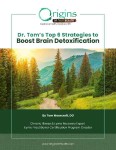
This study, published in Parasites & Vectors (2024), investigates the co-infection of Babesia odocoilei and Bartonella spp. in humans across the Americas. The research highlights both the diagnostic challenges and clinical implications of these infections in patients presenting with non-specific chronic symptoms.
Key Findings:
- Babesia odocoilei:
- Traditionally associated with cervids (e.g., deer and elk), Babesia odocoilei was confirmed in seven human cases through advanced molecular diagnostics.
- These infections are primarily transmitted via ticks (Ixodes scapularis and Dermacentor variabilis in North America), though the study raises questions about alternative transmission modes, such as zoonotic exposure.
- Bartonella spp. Co-infections:
- Six of the seven individuals were co-infected with various Bartonella species, including Bartonella henselae and Bartonella quintana.
- Bartonella spp. infections are often underdiagnosed due to non-specific symptoms and limitations in conventional diagnostics. The study suggests Bartonella transmission via ticks, animals, or other vectors, although conclusive evidence remains elusive.
- Symptomatology and Case Details:
- The patients exhibited symptoms such as fatigue, memory loss, headaches, irritability, and insomnia, with some experiencing neuropsychiatric issues such as anxiety and hallucinations.
- Notably, the study identified both acute and chronic presentations, with illnesses ranging from a few days to 14 years.
- Molecular Diagnostics:
- This research employed droplet digital PCR (ddPCR) to improve the detection of Babesia and Bartonella DNA, achieving higher sensitivity than traditional PCR methods.
- Sequential testing, including enrichment blood cultures, confirmed the presence of B. odocoilei even in cases where parasitemia was minimal.
- Clinical Implications:
- Unlike acute babesiosis, which manifests as hemolytic anemia or thrombocytopenia, the infections in these cases presented with subtle, chronic symptoms, complicating diagnosis.
- The study emphasizes the need for more research into the chronic effects of Babesia and Bartonella infections, as these pathogens may contribute to immune dysfunction and psychiatric manifestations in patients.
- Unusual Cases:
- One case involved the identification of B. odocoilei DNA in uterine tissues of a veterinarian, suggesting potential pathogen localization beyond typical bloodborne infections.
- In a pediatric patient, both Babesia and Bartonella infections were linked to a rash resembling erythema migrans, typically associated with Lyme disease.
Conclusion and Future Directions:
The study concludes that B. odocoilei infections in humans may be more prevalent than previously thought, especially in individuals with chronic, unexplained illnesses. Co-infections with Bartonella spp. complicate diagnosis and treatment, warranting further research to understand transmission modes and the full clinical spectrum of these infections. Clinicians are encouraged to consider both pathogens in patients with chronic symptoms, particularly those with a history of animal exposure or tick bites.
This case series highlights the importance of improved molecular diagnostics, including ddPCR, to accurately identify and manage these infections. Future studies should focus on better defining the clinical significance and transmission dynamics of Babesia-Bartonella co-infections to improve patient outcomes.
This paper supports what clinicians, including myself, are seeing in our clinical practice. It highlights the need for more advanced approaches to the treatment of Babesia infections with a thorough understanding that co-infection is more commonplace that the general medical establishment has previously understood and requires precise diagnosis and adequate treatment.
I have been lecturing on emerging treatments for the treatment of Babesia species and am proud to have just spoke at the 2024 LymeBytes conference on the use of both medications and botanicals for Babesia and Bartonella infections. I will also be giving a similar lecture at the upcoming 25th ILADS Annual Scientific Conference in Austin, TX – November 7-10, 2024
References: Maggi RG, Calchi AC, Moore CO, Kingston E, Breitschwerdt EB. Human Babesia odocoilei and Bartonella spp. co-infections in the Americas. Parasit Vectors. 2024 Jul 11;17(1):302. doi: 10.1186/s13071-024-06385-4. PMID: 38992682; PMCID: PMC11241936.


